

1060-80
| See an engraving of the abbey. | ||
| The city of Caen first became important under the Norman dukes in the 10th and 11th centuries and was the capital of lower Normandy under William I. William I the Conqueror and his wife Matilda founded two monastic communities in Caen, the Abbaye-aux-Hommes (dedicated to St. Stephen) for men and the Abbaye-aux-Dames for women. Both churches, associated with the respective monasteries, are good examples of Norman Romanesque architecture, which is often severe and logical. Most Norman churches also have paired towers and square crossing towers. | ||
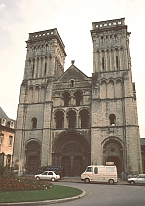
|
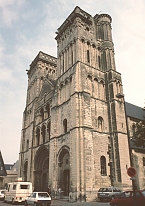
|
The front facadeThe doors in the towers lead directly to the side aisles. The pediment of the central bay echoes the nave roof. |
Details of the top of the facade and the central portal tympanum |
||
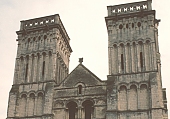
|

|
The tympanum depicts the Trinity and the four apocalyptic beasts. See also Chartres central portal. |
The nave wall |
||
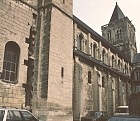
|

|
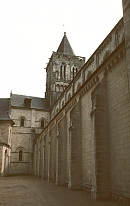
|
 Click here to return to index of art historical sites.
Click here to return to index of art historical sites.
 Click here to return to index of artists and architects.
Click here to return to index of artists and architects.
 Click here to return to chronological index.
Click here to return to chronological index.
